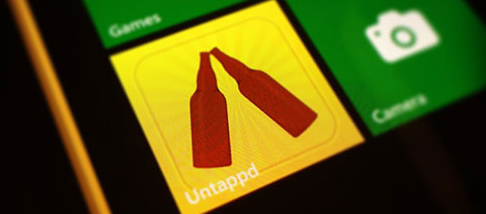Windows Phone apps: A choice between (Metro) style and substance?

Over the past couple of days, two new Windows Phone 8 apps have some wondering what it means to be a "Metro"-style application these days.

When Microsoft announced the beta of the Microsoft-developed Facebook app for Windows Phone 8, many wondered aloud why it didn't take advantage of the usual Metro-Style conventions, especially around navigation.
The same is happening today, May 2, with the rollout of the Untappd beer-enthusiast app for Windows Phone 8. The Windows Phone 8 Untappd app looks almost identical to the iOS and Android versions. Some Windows Phone and Windows developers are not happy about this and have been taking the Untappd developers to task on Twitter.
Full disclosure: I had the chance to beta test the Untappd Windows Phone 8 app for the past month-plus.I like the Untappd app. It lets users keep tabs (pun intended) on beers they drink, comment on and toast other friends' beer check-ins and even upload beer-enthusiast pics. (How many different pictures of a pint of beer can you upload? Endless, if my feed is any indication.) Untappd claims half a million registered users and 28 million beer check-ins to date.
Do I care that it doesn't use Metro conventions for navigation? I don't. What matters more to me is the Metro look and feel of the overall Windows Phone OS platform than a specific app adhering to some kind of Metro-Style guidelines -- a similar sentiment to what Windows SuperSite's Paul Thurrott described with the Facebook app for Windows Phone 8.
I talked to Untappd Co-Founder and Chief Technology Officer Greg Avola today about how the two-man shop that is Untappd developed the Windows Phone app.
Avola said he used PhoneGap to take the existing Untappd code and port it to Windows Phone. He went this route because Untappd started out as a Website. The Untappd guys then rolled out local apps simultaneously for iOS and Android phones.
"We use PhoneGap for all our apps. It lets us be flexible in writing our own code. You build it like it's a mobile site and then you customize it," explained Avola.
While Untappd got quite a few requests for a Windows Phone version, Avola said they decided to wait until the Internet Explorer browser was more standards-adherent before moving ahead.
"A Windows Phone version of our app has always been in high demand, but the HTML5 support just wasn't there on Windows Phone 7," said Avola. "Our app was built mostly for WebKit, so we had to redesign our code to make it work with IE," he added.
The initial port to IE took only four hours after dropping it into PhoneGap, he said. But then a number of tweaks and fixes were needed to make it work correctly on Windows Phone around custom fonts, layout and touch events. Some last-minute bugs (found by Microsoft) and stringent rules around the distribution of alcohol-related apps delayed the planned Untappd app on Windows Phone 8 by about a month, Avola said. But all in all, developing for Windows Phone went more smoothly than many had led Untappd to believe, he said.
Is it a case of (Metro) style vs. substance?
In building Untappd for Windows Phone, "we tried to conform to enough of the UI standards but to still create a common experience across all the platforms," said Avola.
In other words, as Untappd's other employee, Co-Founder and Designer Tim Mather tweeted, Untappd designed for the app, not the device.
This common experience benefits Untappd when updating and refreshing its app with new features. A common look and feel makes it easier to push updates simultaneously across all phones, he said. That said, he did note that the feed design which debuted in the Windows Phone version of the app appeared first on Windows Phone; it will be coming soon to iOS and Android.
The bottom line is publishers and brands seem to own the right to deliver the UI experience of their choice for Windows Phone apps as long as they meet the basic Store certification requirements. On Windows Phone, this means apps need to adhere to certain rules around things like the Windows Design Language, live tiles, wallpapers and such. But it doesn't seem to mean Windows Phone versions of apps won't adhere to the developers' own design rules and principles.
Thoughts, Windows Phone developers? Is it better to have more apps, more frequently updated if that means they might not be as different/Metrofied on Windows Phone? Does it really matter if Windows Phone apps look and feel like Android and iOS ones, as long as the overall "Metroness" of Windows Phone itself remains?